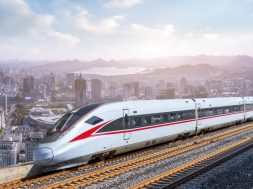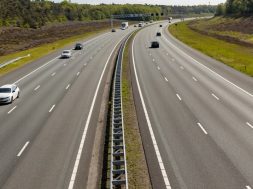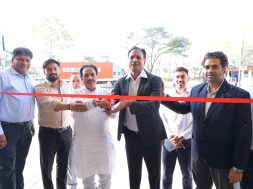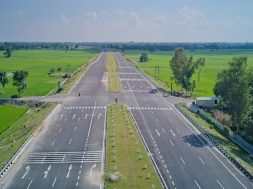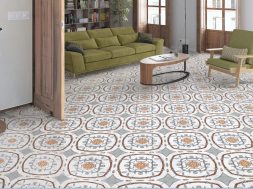To overcome the growing challenges of accommodation and create a connect between the people and city, experts come together and speak about the vertical opportunities available
The Indian real-estate industry is now exploring vertical opportunities to overcome challenges in land acquisition, space and costs. The country is all set to be the next big home for the tallest skyscrapers in the world, with the Indian government beginning to focus on regulatory measures and specific building codes for high-rise structures.
The recently held Tall Buildings Summit in Mumbai saw Indian and overseas tall buildings professionals share their expertise on the growing trend of skyscrapers all over. Marshall Strabala, Design Partner, 2Define Architecture leads the next generation of Supertall Building Designers. His presentation at the Summit revolved on the query is the world’s tallest buildings sustainable. He also threw light on the cost of going higher, quality, flexibility and safety of tall buildings and the future of supertall buildings. Sharing his views on tall buildings being sustainable, Mr. Strabala added that there is not one answers for tall buildings being sustainable. According to him tall buildings consume less energy. He further said, “Tall Buildings could be bad if it’s not designed properly and its just part of the answer”.Commenting on the need for high-rise buildings in the city, Mr. Strabala said, “Cities are like people. Everyone is different. Some cities are full of skyscrapers and some aren’t. One should look at different factors that work for the city and then design accordingly. There should be a constant aim to make things better for Mumbai. This is where the three P’s consisting of Policy makers such as government bodies, Professionals such as engineers, master-planners, architects, developers and People come into picture. They have to make a deliberate effort to come together and make a difference. Though it is very difficult to arrive at a common consensus, one need to look at making things easier for developers to build and create buildings for people and not make it harder for them”.
Popping a 100-storey building in the middle of Mumbai will not serve the purpose. It will probably create more problems than anything else. What needs to be done is to take the people and recreate spaces for them. Creating a better city requires to work with the policy-makers, professionals and the people. As an architect or policy maker, one should strive hard to give back to the city by building spaces.
Build infrastructure before building larger developments is the message. The infrastructure for storm water run-off, sewage, water delivery, electrical delivery all that has to be put in place first and also conveyance of people should be taken into account and if one can create neighbourhoods where people can walk to work which people do in the city, this way the professionals have to think about giving back to the city.
Taking forward the discussion of tall buildings in the city, Abhin Alimchandani, Director, Architecture, STUP Consultants feels the city of Mumbai will get a lot of skyscraper irrespective of whether it needs it or not. According to him, “The skyscraper needs to be designed well. If you want to do something it takes time to achieve it and you got to act on it. I believe that every city should have different prototypes of buildings. People like to live in different ways so it’s not that Mumbai should not have skyscrapers – it should have, it should have high density low rise, it should also have low density developments. We want to create that kind of variety in the city”.
‘Walk to work’ is another concept that was highlighted by many during the summit. Mr. Alimchandani explains the possibility of this concept in Mumbai. “I think it is necessary to have the walk to work concept, but we got to have the guts to actually implement that and perhaps the guts starts from the governance. It is the matter of getting involved in the governance, see to it that the changes happen and Mumbai is literally connected with seven islands. When you connect things together you not only physically connect them together, connect them with your mind and have a masterplan for it. It’s the time to become small islands again, to think small in one area, make the local action happen, make people sort their problems out. I am sure if the people get their freedom with a generous set of guidelines, the object of ‘walk to work’ concept can be achieved. I believe there is lot of good when you bring good minds together and make them act. It’s just inertia. We have to get something going that’s it”.
Are tall buildings a necessity, are they really needed, is it helping the people, is it taking away the cultural heritage? Architect Sanjay Porwal of Kalayojan architects tries to analyse these queries. He does not view tall buildings as a necessity for the city of Mumbai. Mr. Porwal feels tall buildings are being constructed due to peer pressure. People need to sit down and think and not just join the race and follow what the others are doing. “I think we can do with medium rise buildings as well. We need not go as high as 120 or 150 ft. tall high and we can do much better. Most of the population in the city resides in a straw like structure and people who are advocating high rise have vested interest in one thing or the other. If we come together to develop region-wise, we may not have to go as high as building a 10 to 50 storey building”, opines Mr. Porwal.
The architect feels high rise structures make people loose connectivity and make them feel isolated. “We cannot stay in an ivory tower isolated from our people. We are essentially social animals and have a deep heritage with us. If we have to build tall let’s take our heritage with us”, he advocates.
Therefore, looking at the changing skyline of the city, it is very essential to build for the people keeping the basic necessities in mind while going vertical.
Cookie Consent
We use cookies to personalize your experience. By continuing to visit this website you agree to our Terms & Conditions, Privacy Policy and Cookie Policy.
